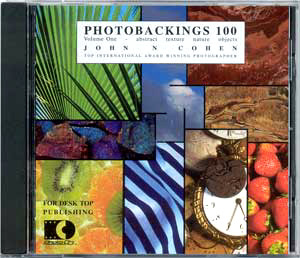Dunns Imaging
Dunns Imaging in Cradley Heath was the lab I had used for many years, and they were the first in the UK to install the Kodak equipment to produce the then new PhotoCD. It was a very cheap way of making digital images from film (that Tim Harris had described), so I was able to quickly learn of the advantages and the problems it offered.
Originally the Kodak sales drive was for amateur photographers to enable them to have lots of images saved and they manufactured a small player to put these images on home TV screens, instead of relying on prints. This did not do well, and the quality was not that good. They then changed the system to enable superb quality large digital images to be stored at a low cost and aimed this at the professional market. They had a problem because the PhotoCD had already earned a poor reputation, especially as printers had not found that they could achieve the desired prints from the images either.
I spent a lot of time working with a printer, who was prepared to experiment with Dunns to get good quality prints from this new PhotoCD and we succeeded, my method was to take a photograph of a colour printing test chart, I had it scanned on to the PhotoCD which the printer then was soon able to print correctly. Later Kodak added some software that made colour balance and printing much more reliable.
www.dunnsimaging.co.uk
There was a great advantage because once an image was on the PhotoCD it could be used any number of times, any size, without ever having any scanning costs again. For my photography it opened up, a big advantage for product shots, as I could photograph items individually and then with Photoshop create a better group shot, for little extra cost.
The Kodak PhotoCD & Actuality PhotoDigital
I was the first person to use the PhotoCD as a sales tool; by having one hundred high quality large background photographs on a PhotoCD, Dunns then made a master CD-ROM of just the largest images and these I had mass produced to sell. The CD-ROM ‘PhotoBackings 100’ had 100 copyright free photographs, ready for immediate use, priced at 175 pounds plus VAT representing quite a bargain, since photo libraries charged anything from 100 to 600 pounds for each copyright free photograph.

This was a product for any designer, it was practical to use even small parts of an image, plus the easy option to alter the colour balance, and best of all my pictures would not date.
jncohen.net/photostock